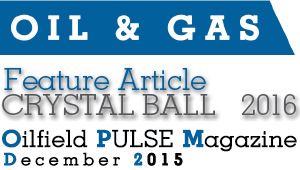What Oilfield Rental Companies Must Control

| Date Published | December 24, 2015 |
| Company | Riger |
| Article Author | Michael Maltsev |
| Article Type | December 2015 Issue |
| Category | Articles, Feature, Oil & Gas |
| Tags | Oilfield Rentals, Oilfield Software Tools, S&S |
| HUB SEARCH | Leadstone |

What Oilfield Rental Companies Must Control
Over the past 10 years, the oil and gas industry has been transformed by unconventional drilling. Horizontal drilling and  fracking has produced tremendous new reserves. This made a groundwork for productivity transformation where digital technologies help companies reimagine their business processes to drive increased efficiency.
fracking has produced tremendous new reserves. This made a groundwork for productivity transformation where digital technologies help companies reimagine their business processes to drive increased efficiency.
Big data, digital oilfield, cyber security, advanced analytics, and business intelligence become very important for producers and service companies. The oilfield rental companies have to become more efficient in operations too. They can’t just spray and pray.
The poor service and rental companies are being hammered. They are getting beat up by their customers to lower their prices, to do more for less, and get things done quicker. Once again, operational excellence is the key for them to accomplish all that and still maintain profitability.
We believe oilfield rentals should have a digital platform to utilize benefits of innovative technologies. Our product, RigER – Oilfield Rental Software, helps energy service and equipment rental companies increase operation performance.
The Canadian Association of Oilwell Drilling Contractors (CAODC) expects a low drilling season with low oil prices and low drilling and investing activity. CAODC predicts this trend to continue throughout all four quarters in 2016, with drilling rig utilization levels averaging around 22% for the year. CAODC projects the number of wells drilled in 2016 at 4,728.
In this circumstance, the role of management decisions is growing. Oilfield rental companies have invested time and capital to build cutting-edge fleets and want to make sure it is performing to the best of its ability. Due to the importance of managing this asset, very quickly the question is asked, “Which numbers can I look at to manage and control my rental fleet?”
There are six equipment rental Key Performance Indicators (KPI). Using analysis of revenue and other factors, they measure efficiency of fleet use, business activity, and fleet turnover.
Acquisition Cost measures the size of a rental fleet expressed in a base currency. Consistent with the concept of gross book value, it represents the undepreciated cost of acquiring a piece of equipment.
• For assets bought off lease, AC represents the cost paid to buy-out the lease.
• AC includes the cost of any refurbishments that can be capitalized.
This seems to be controversial in the rental industry, and there are several ways to do it correctly. You should remember no matter how you choose to calculate it, make sure you do it consistently and have strong benchmarks for how you choose to do it.
WE CALCULATE IT AS:
(Deployed Days) / (Days in A Fleet) = Time Utilization Percentage
Example: 18 / 30 = 60%
Age is the fleet weighted average age (expressed in months) of the equipment in the fleet.
• In-service date is used to calculate fleet age.
• No adjustments for refurbishments.
Financial Utilization is a function of annualized rental revenue exclusive of ancillary fees weighted by AC.
• FU is calculated by dividing ‘pure’ rental revenue by average AC.
• ‘Pure’ rental revenue excludes ancillary fees, such as environmental fees, damage waivers, delivery charges, and re-rent revenue.
WE CALCULATE IT AS:
(Rental Revenue) / (Acquisition cost) = Financial Utilization Percentage Example:$98,000.00 / $100,000.00 = 98%
The advantage to using this KPI is it cannot be overly affected by outside influences. Typically, the original cost of the asset and the total revenue collected in a specific time period are easily determined. This allows very different types of equipment to be compared to each other.
The period-over-period change in rental rates measures the change in average contract rental rates. Rates vary depending on contract type (daily, weekly or monthly), discounts, and the equipment rented.
• When reporting period-over-period rental rate changes, rental companies are measuring the average change in contract rental rates weighted by the prior period revenue mix.
The most important KPIs in this list are Time Utilization and Financial Utilization. They should be studied as a pair. If we look at just one of them, it would be easy to miss obvious trends and issues. Keep in mind Acquisition Cost for equipment is a huge factor in the overall equation. Some typically low Financial Utilization items, such as specialty heavy equipment, are very expensive.
In Riger, we build management reports, Rental Units Utilization, where we can present utilization by whole fleet, by each location, by different equipment types, and/or by any possible division of your fleet all the way down to the individual serial numbers. By looking at the report, you can quickly see how your fleet is performing.
 KPI implementation to day-to-day operations will help increase rental fleet performance and allow oilfield rental companies to stay successful in a downturn.
KPI implementation to day-to-day operations will help increase rental fleet performance and allow oilfield rental companies to stay successful in a downturn.
Have a Profitable Drilling Season!